Explore Southern California’s Desert Parks On This Epic Road Trip
California is much more than sandy beaches, the glitz and glamour of Hollywood, and tech start-ups. The third-largest state in America, after Alaska and Texas, California is incredibly, exceptionally diverse.
This blog post is about the Southern California desert parks, but it could just as easily have been about the Sierra Nevada Mountains, the Northern California forests, or the phenomenal Channel Islands.
There are world-famous wine regions, vibrant cities and charming rural towns. There’s cutting-edge technology and Wild West history. You can visit both hip craft breweries and lively saloons.
I could write dozens of blog posts about this amazing state. But for now, I’d like to zoom in on one particular aspect of California that I really like: the best parks in Southern California.
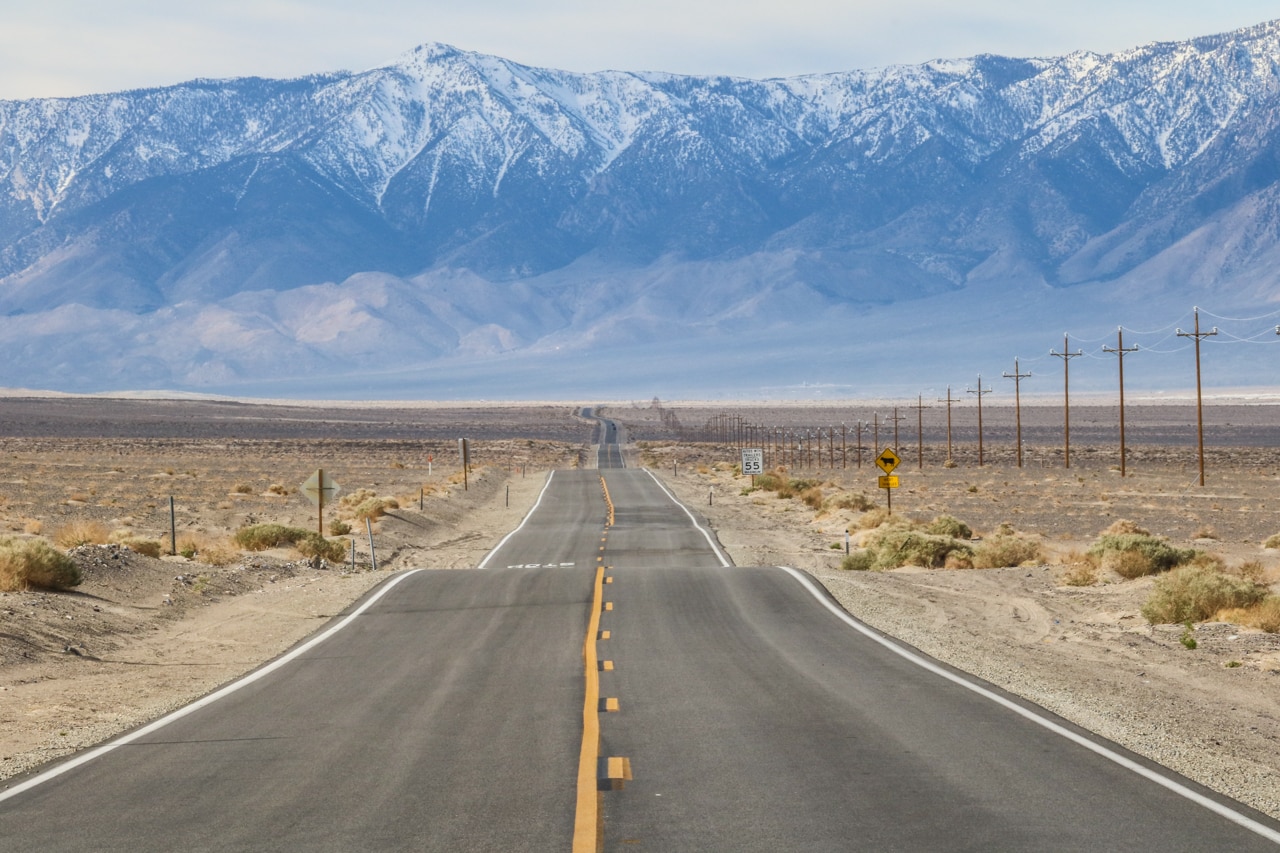
This Southern California desert parks post contains affiliate links. You can read more about our Terms of Use / Disclosure here.
Southern California Deserts: the Colorado and Mojave
Most of southeastern California is bone-dry desert. The Colorado Desert makes up the southern part of the region. That desert is actually a subdivision of the much large Sonoran Desert, which extends further south into Mexico.
Neighboring the Colorado Desert to the north is the Mojave Desert, which lies at a higher altitude and is, on average, a bit cooler. “Cooler” of course needs to be taken with a huge grain of salt. These places are scorching hot.
Together, the Colorado (Sonoran) and Mojave Deserts make up two of the four major deserts in North America. The third and fourth are respectively the Great Basin and Chihuahuan Deserts.
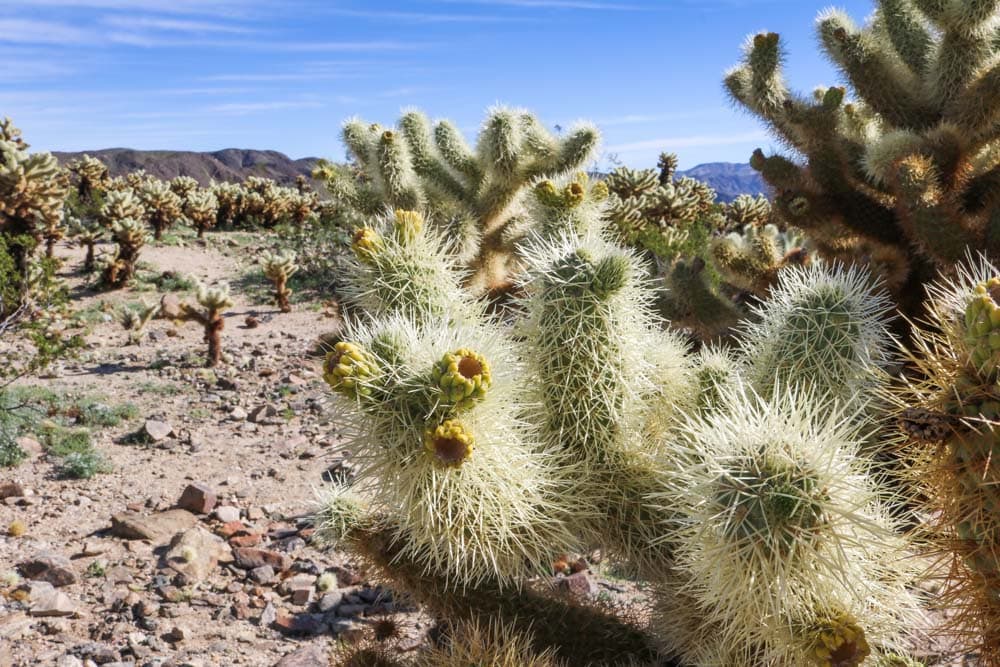
Spring Road Trip to the Southern California Desert Parks
Based on my own experiences and three weeks in California, this road trip will take you from the lower-lying Colorado Desert into the higher-altitude Mojave Desert. You’ll cruise through three awesome Southern California desert parks.
The Anza-Borrego Desert lies deep within the Colorado Desert and is one of the best state parks in Southern California. Joshua Tree National Park encompasses parts of both deserts and is situated on the very line where the deserts meet, which creates a fascinating variety of landscapes and habitats. The third one, Death Valley National Park, is in the Mojave Desert.
Those three Southern California parks are also the three core areas of the Mojave and Colorado Deserts Biosphere Reserve, which is part of UNESCO’s Biosphere Reserve Program.
You’ll need about ten days for this epic road trip, up to twelve if you include traveling to and from California.
If you don’t have one, you can pick up a car at rental companies in San Diego, Los Angeles or Las Vegas, the three most convenient starting points for this drive.
Los Angeles and Las Vegas are especially great bases for national park road trips in the Southwest.
Note that early spring is the absolute best time of the year to visit these state and national parks in Southern California. I will repeat and expand on that a few times later on.
Below, you’ll find an overview of each of these three fantastic Southern California desert parks. Feel free to skim through or read everything in depth. If you just want to see some pretty pictures, there are plenty of those as well.
Anza-Borrego Desert State Park
The first destination on this epic spring road trip to the Southern California desert parks is the Anza-Borrego Desert.
A two-hour drive northeast of San Diego—a bit longer from Los Angeles—, Anza-Borrego Desert State Park may not be among the best-known places in California, but it’s absolutely worth visiting.
This Southern California state park is one of the largest state parks in the contiguous United States, covering more than 600,000 acres (2,400 km²). There are twelve designated wilderness areas and over 500 miles (800 kilometers) of dirt roads.
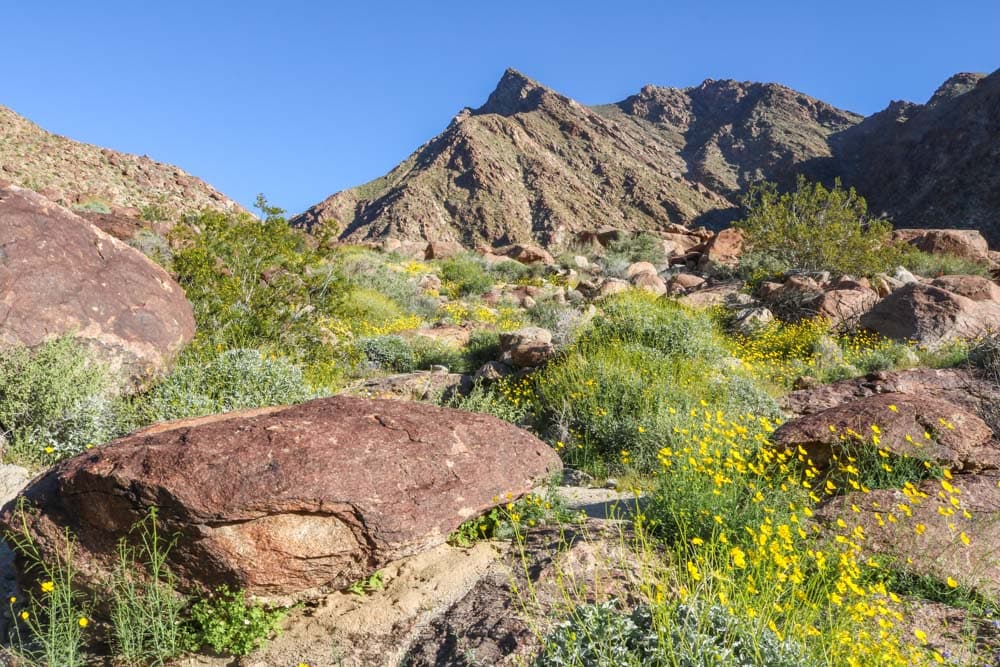
The park’s name is a combination of two things that are completely different, yet both characterize this region.
“Anza” is the name of the Spanish explorer Juan Bautista de Anza who, from 1774 to 1776, led an overland expedition from Mexico to the Bay of San Francisco, passing through this corner of the Colorado Desert. “Borrego” is the Spanish word for bighorn sheep, which abound in the area.
The tourist hub in the Anza-Borrego Desert is Borrego Springs, a sleepy desert town that’s flooded by visitors in spring. Home to all necessary amenities—banks, a library with free WiFi, grocery stores, gas stations,…—, Borrego Springs lies just outside of the state park.
I stayed at the Borrego Palm Canyon Campground, which lies within the park and is the starting point of one of the greatest hikes in the area.
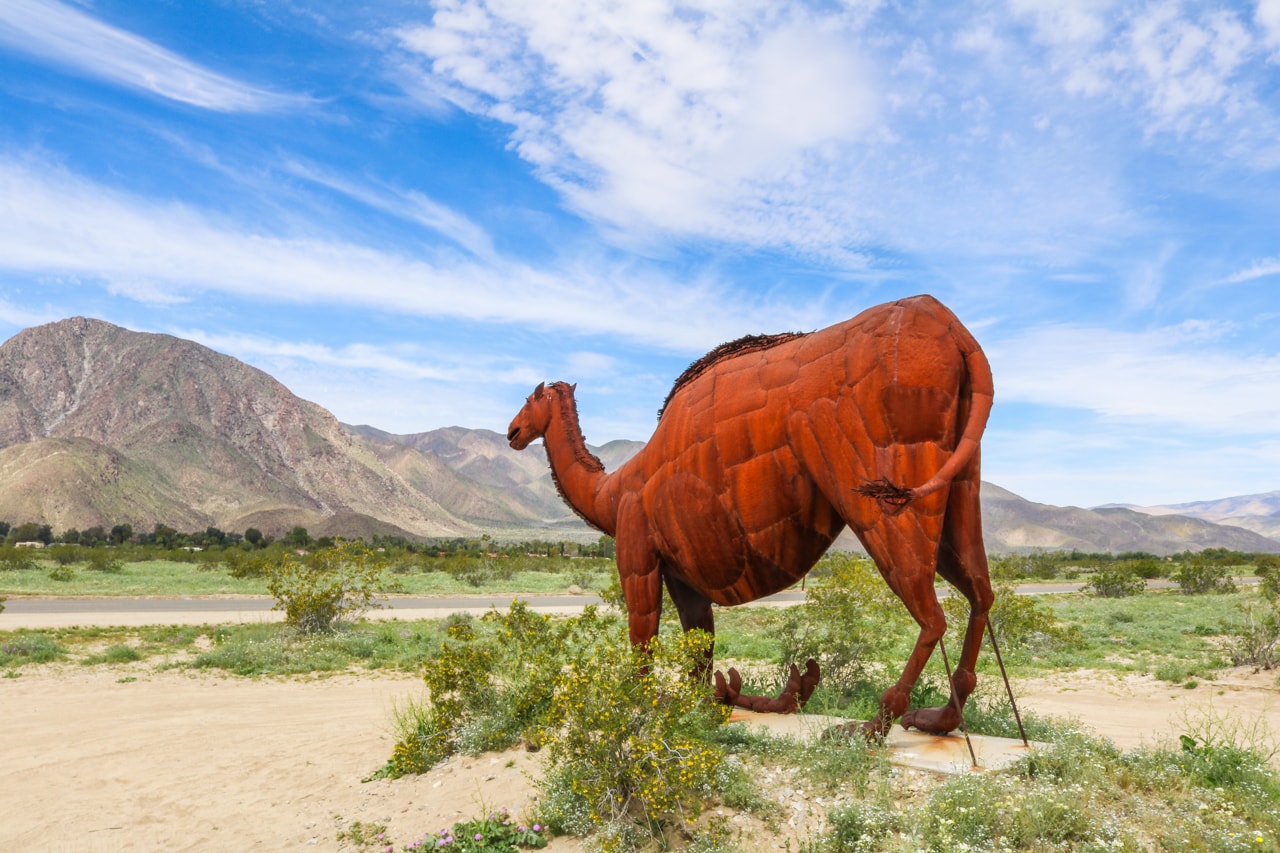
Anza-Borrego Desert Highlights
- Palm Canyon (hiking and wildlife watching)
- Ricardo Breceda’s metal sculptures (dozens of huge sculptures of prehistoric animals surrounding Borrego Springs)
- Spring wildflowers (much more about the Anza-Borrego Desert wildflowers in this blog post)
- Off-road driving (more than 500 miles of dirt roads crisscross the Anza-Borrego Desert)
Recommended Hike
- Borrego Palm Canyon (3-mile (4.8-kilometer) roundtrip to a California fan-palm oasis)
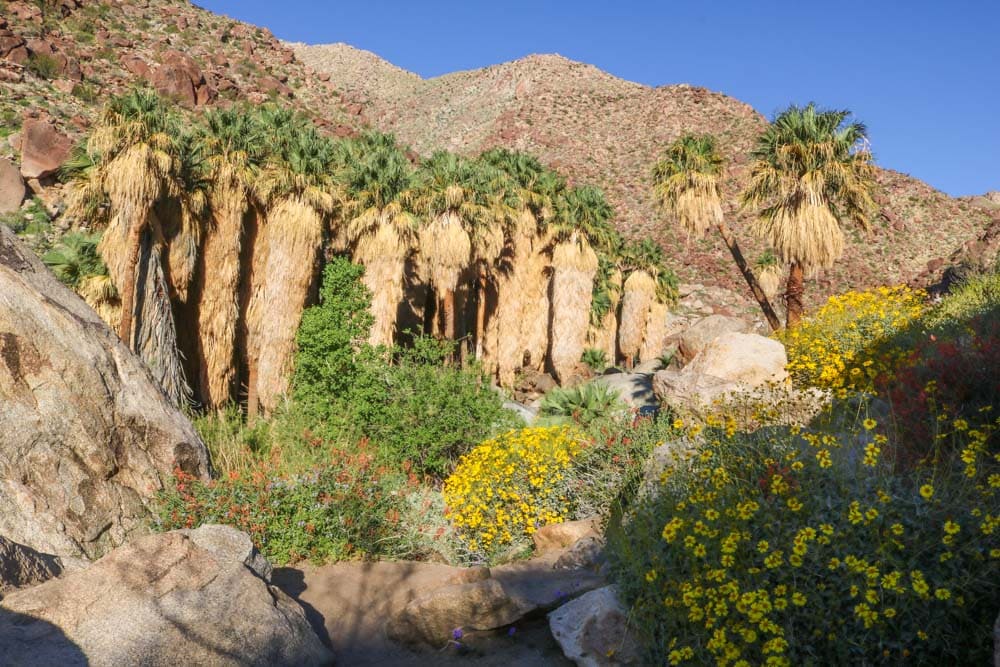
When to Visit?
Short answer: Early spring
Long answer: There’s only one time of year to visit this park and that’s early spring. In the month of March, many millions of wildflowers carpet the desert floor, creating a truly amazing display of colors in an otherwise monotone desert landscape.
I had to the opportunity (and fortune) to visit Anza-Borrego Desert State Park, which is without a shred of doubt one of America’s greatest state parks, right when the wildflower bloom was at its peak.
It’s one of the best California state parks. I totally loved it and can only recommend visiting this great and underrated destination yourself. And March is when you’ll want to be there. Consider booking your campsite or other Borrego Springs accommodation way in advance, though. Things get ridiculously crowded that time of year.
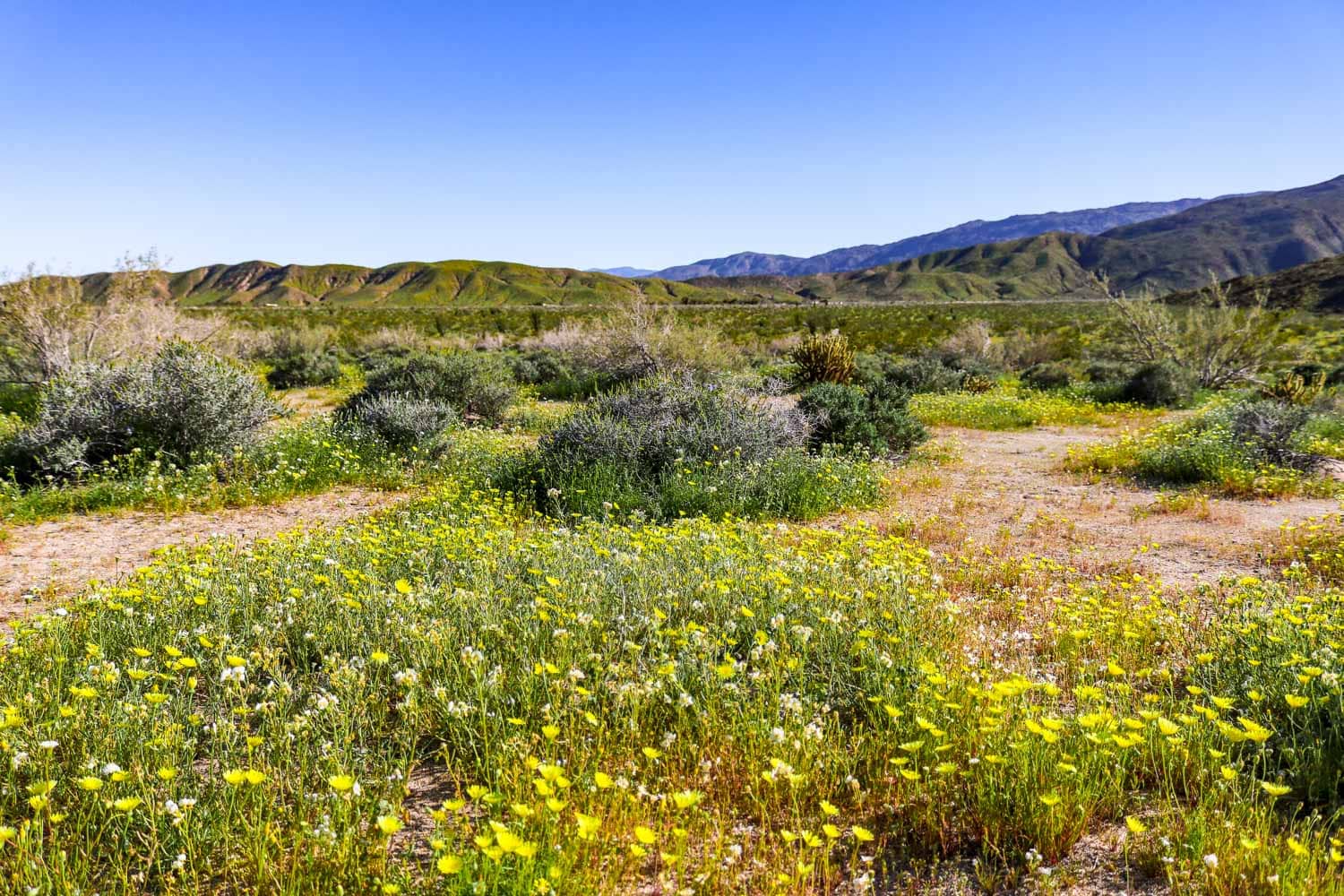
Where to Stay?
Short answer: Borrego Palm Canyon Campground
Long answer: If you want a campground with basic facilities, there’s really no better place to stay than the Borrego Palm Canyon Campground. Located just west of Borrego Spring, this amazing campground offers easy access to the hiking trail mentioned above. It also lies an easy walk from the park’s visitor center.
The campground has toilets, paid showers, drinking water and a kiosk that sells firewood. If you want anything else, you’ll have to head into Borrego Springs.
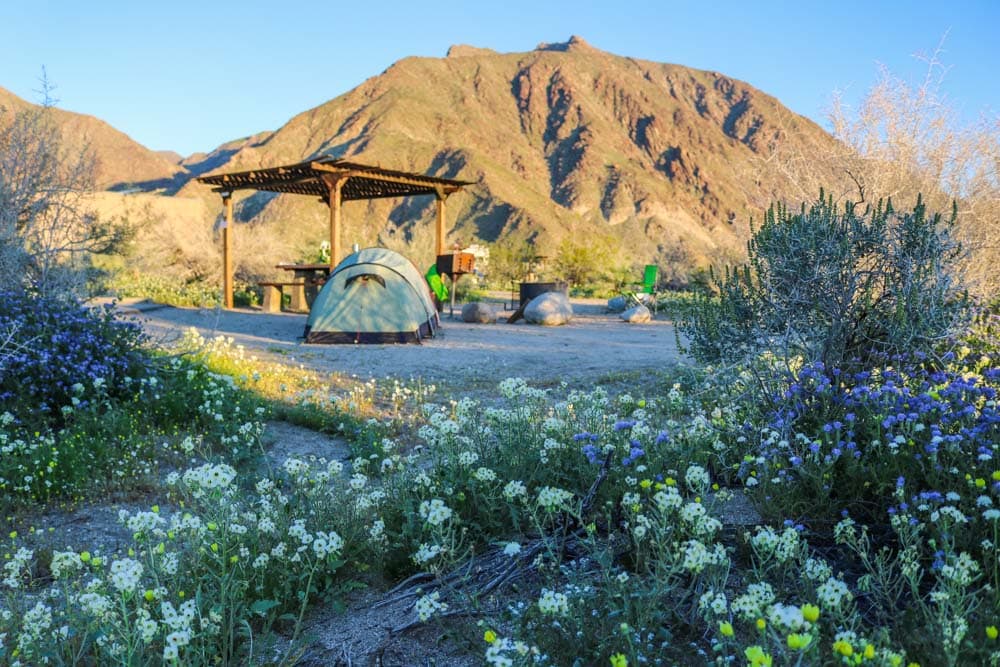
How Much Time Do You Need?
Short answer: Two days, one night
Long answer: I spent three full days and three nights in Anza-Borrego Desert State Park, which is definitely long enough to see what it’s all about. Although this is a vast park, you can get a feel for it by just sticking around Borrego Springs. If you’d like to go off-roading, however, you might need to head deeper into the desert.
I suggest spending two days and at least one night there. This allows you to keep things relaxed and unrushed, which is something that should always be a priority.
In those 48+ hours, you’ll be able to go for a scenic drive, see the dozens of sculptures around Borrego Springs, go for morning hikes, enjoy evening campfires and nightly star displays, and see those amazing wildflowers.
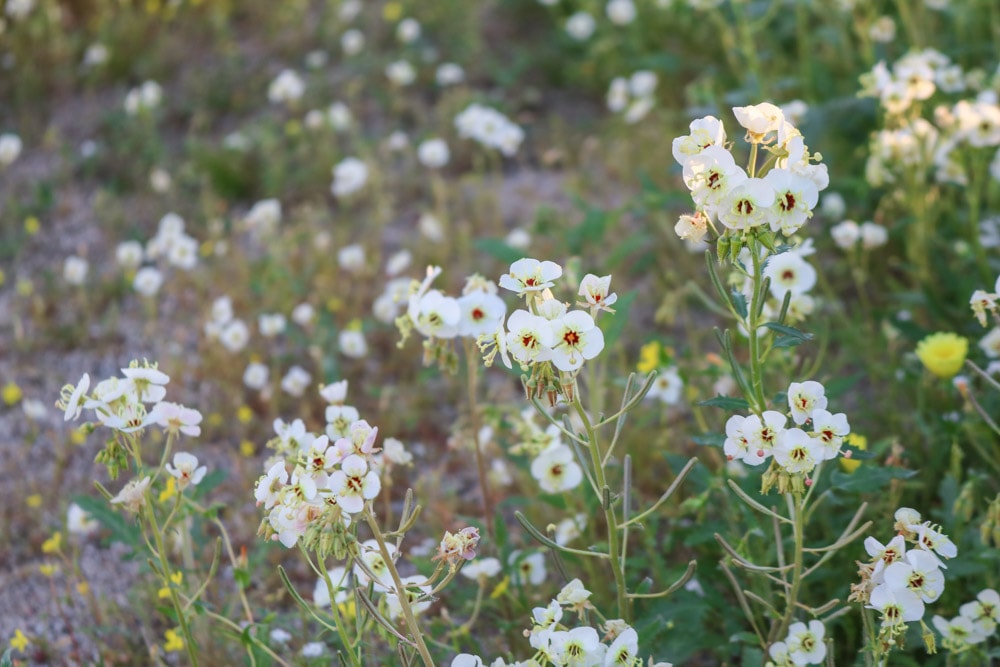
Joshua Tree National Park
A short drive to the northeast of the Anza-Borrego Desert lies Joshua Tree National Park, the second of these awesome Southern California desert parks and one of my personal favorite national parks in the U.S.
A kaleidoscope of features, a place filled with fascinating attractions, Joshua Tree National Park is weirdly enchanting. Situated at a desert crossroads, the meeting point of the Mojave and Colorado Deserts, this Southern California desert park has a surprising variety of ecosystems, landscapes and habitats.
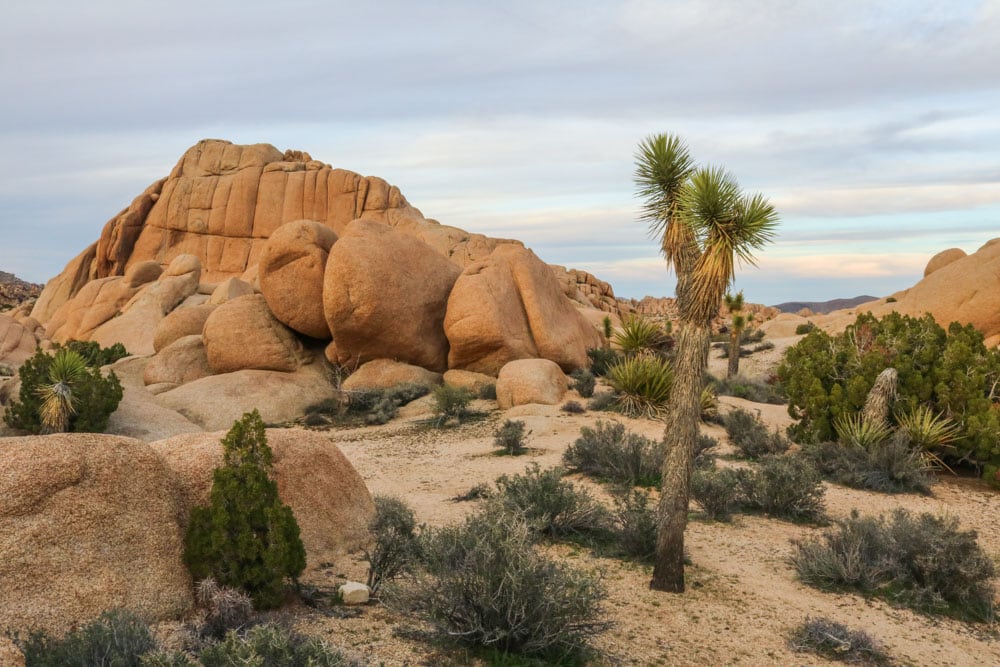
The Mojave Desert, in the northwestern part of the park, lies more than 3,000 feet (900 meters) above sea level, making it a relatively cool desert. This is where you’ll find almost all of the Joshua trees and the boulders that typify the park’s landscapes.
In the southeast, the lower-lying Colorado Desert is much hotter. There, cacti and ocotillo plants dot bone-dry, rocky hills. The drive from one part to the other is fantastic, clearly showing how one type of desert slowly changes into another.
Although this is a desert park, and a desert is often viewed as monotone and singular environment, Joshua Tree National Park is actually incredibly diverse.
From boulders and rugged mountain summits to abandoned gold mines, palm oases, epic views, and those strange-looking trees—they’re actually a type of yucca and not a tree at all—, there’s plenty to keep you busy.
We spent three days and two nights in Joshua Tree National Park, the perfect amount of time to get a feel for it and see all its main highlights.
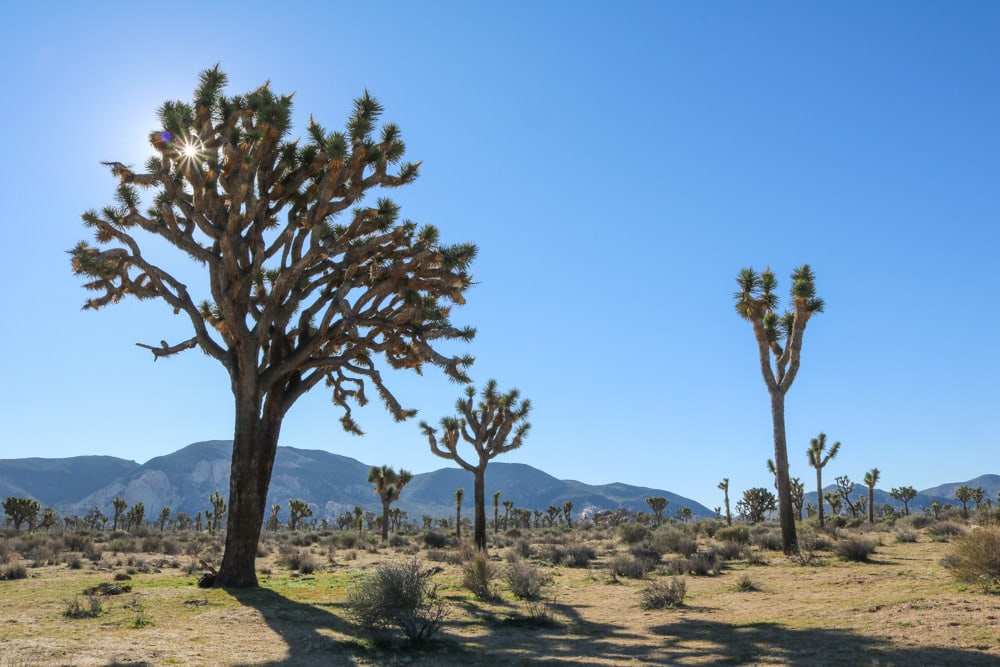
Joshua Tree Highlights
- Keys View (epic sunset views of the Coachella Valley)
- Lost Palms Oasis (largest collection of California fan palms in Joshua Tree National Park)
- Hidden Valley (hiking, rock climbing and bouldering, Joshua trees and wildlife)
- Barker Dam (hiking, petroglyphs, historic water reservoir, Joshua trees and wildlife)
- Lost Horse Mine (remains of one of the most productive gold mines in the region)
- Cholla Cactus Garden (patch of desert filled with prickly cholla cacti)
Recommended Hikes
- Hidden Valley (1-mile (1.6-kilometer) loop past huge piles of boulders and numerous Joshua trees)
- Lost Horse Mine (4 miles (6.4 kilometers) out and back or 6.5-mile (10.5-kilometer) loop to an old gold mine)
- Lost Palms Oasis (7.5 miles (12 kilometers) out and back to a large California fan-palm oasis)
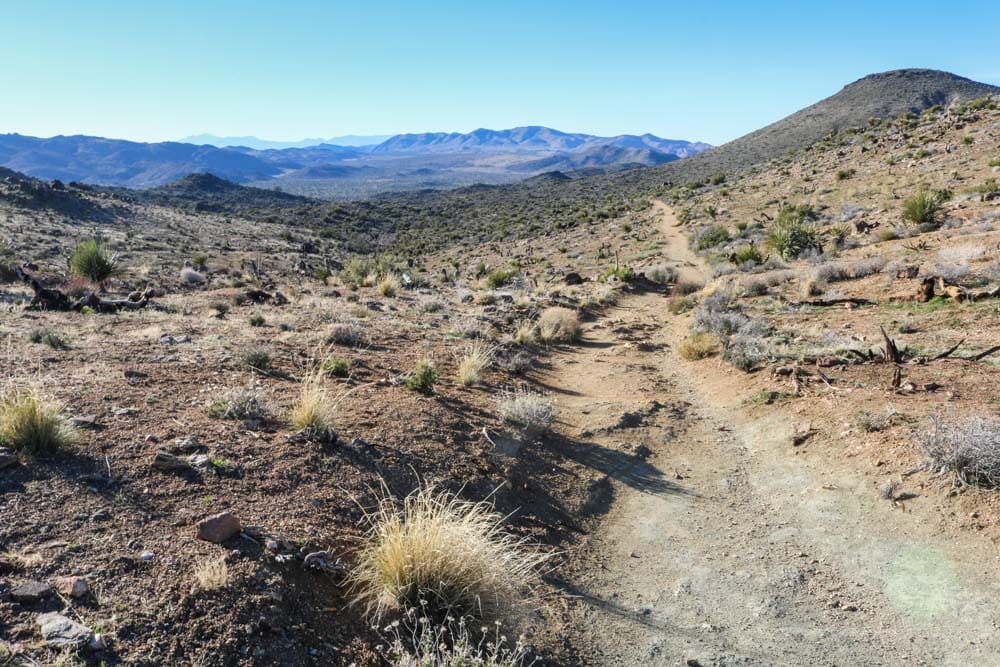
When to Visit?
Short answer: Spring
Long answer: The comfortable temperatures of spring make this the best time of the year to visit Joshua Tree National Park,one of my favorite California national parks.
This is definitely the busiest period, so keep that in mind when planning your visit. Campgrounds will fill up by noon at the latest; make sure to arrive early in the morning.
Just like in the other Southern California desert parks, Joshua Tree gets excessively hot in summer. Winter nights are cold. Spring, and fall as well, offer cool nights, warm afternoons and plenty of sunshine.
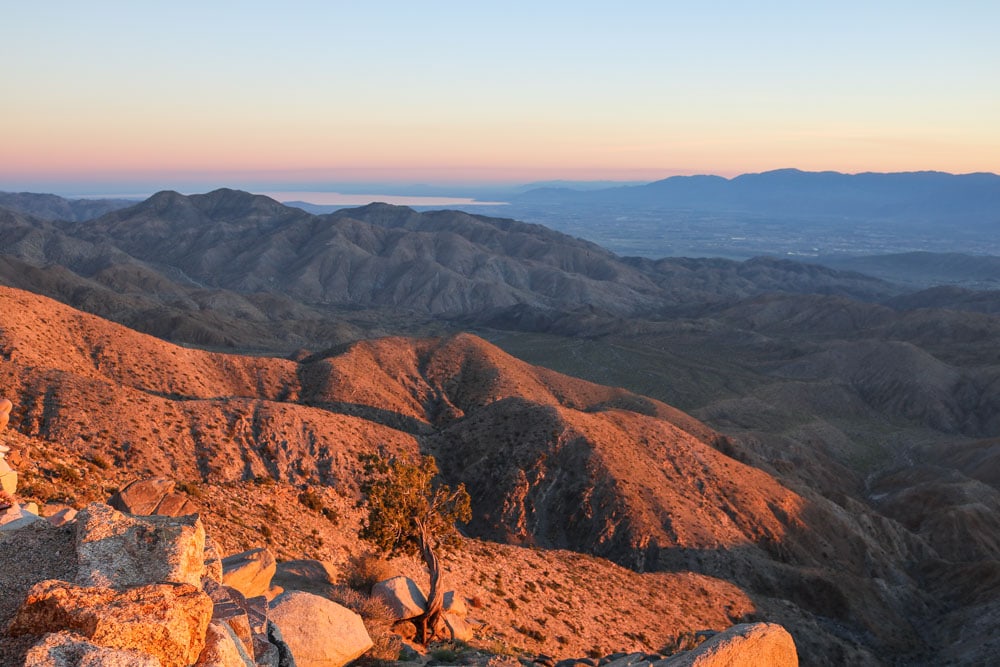
Where to Stay?
Short answer: Jumbo Rocks Campground
Long answer: Spending the night in Joshua Tree means camping. Campgrounds are the only places to sleep in the park. The vast majority of them have only basic facilities like pit toilets, picnic tables and fire grates. Water in the park is scarce and not available at most campgrounds.
That said, it’s precisely that primitiveness of the campgrounds that makes them so attractive. We stayed at the first-come first-served Jumbo Rocks Campground, set amid large boulders and dotted with Joshua trees.
I couldn’t possibly have imagined a better place to stay. In fact, this is one of the greatest national park campgrounds I’ve ever stayed at.
We were there in early March—during Spring Break in fact—, which is a time of year that’s exceptionally busy. And that’s especially true in Joshua Tree, one of the most popular and best national parks in Southern California.
Because the Jumbo Rocks Campground is first-come first-served, I suggest arriving no later than 8 am. However, it’s not necessary to get there super-early in the morning because, if the campground is full, you’ll have to wait until other people leave anyway. People typically start packing up between 8 and 9 am.
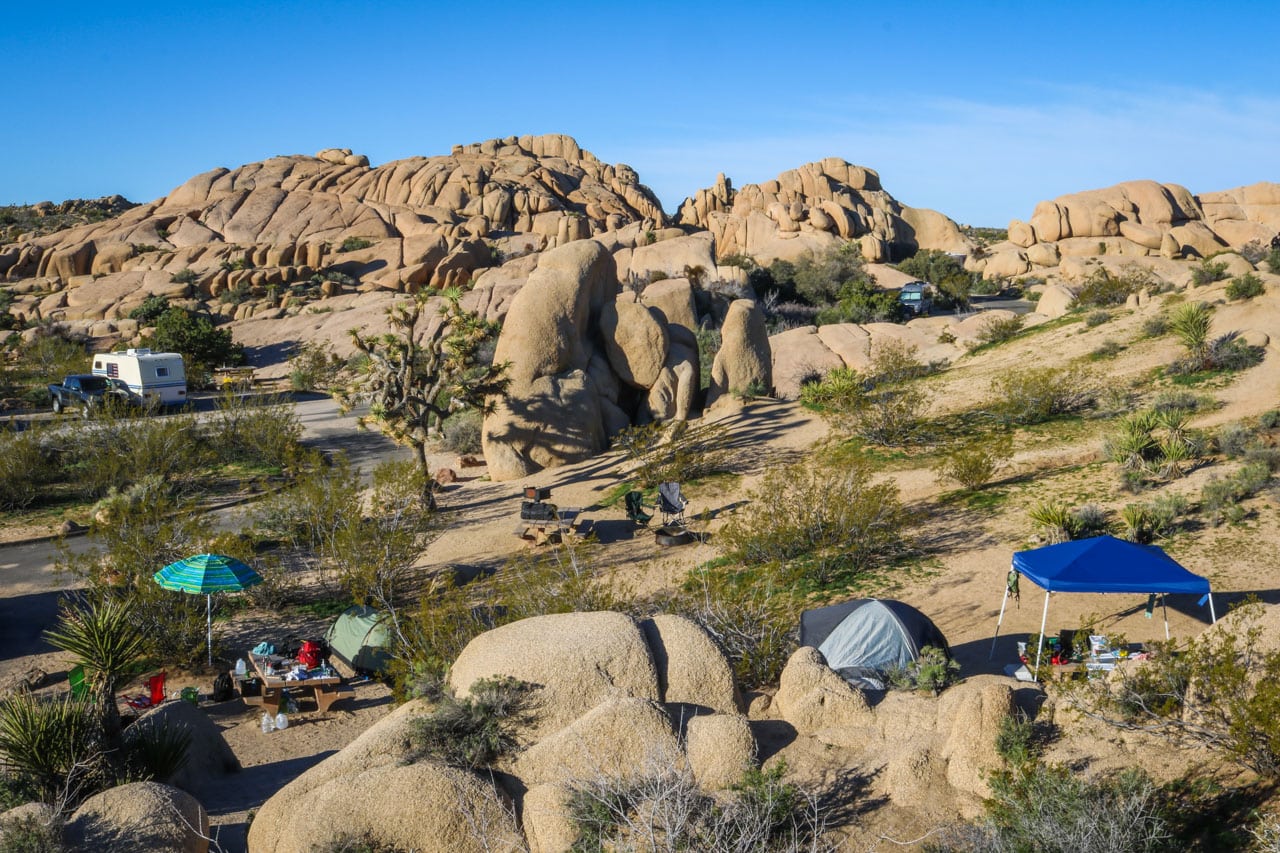
How Much Time Do You Need?
Short answer: Three days, two nights
Long answer: Three days and two nights is enough to see most of what Joshua Tree National Park has to offer. It’s essential, though, to spend at least one night in this national park in Southern California.
The beauty of “J-Tree” doesn’t disappear once the sun’s gone. This park is stunning around the clock, from the quiet sunrises to glorious sunsets and star-studded night skies.
In this time frame, you’ll also have time to do some of the many great hikes in Joshua Tree National Park, go for casual scenic drives and simply relax at your campsite.
Any national park visit is best when you have plenty of time. Rushing through a list of highlights doesn’t exactly improve your travel experience, no matter where you go. Therefore, take your time and relax.
Pitch a tent, kick up your feet, and give yourself the chance to enjoy two nights of stunning night skies, instead of just one.
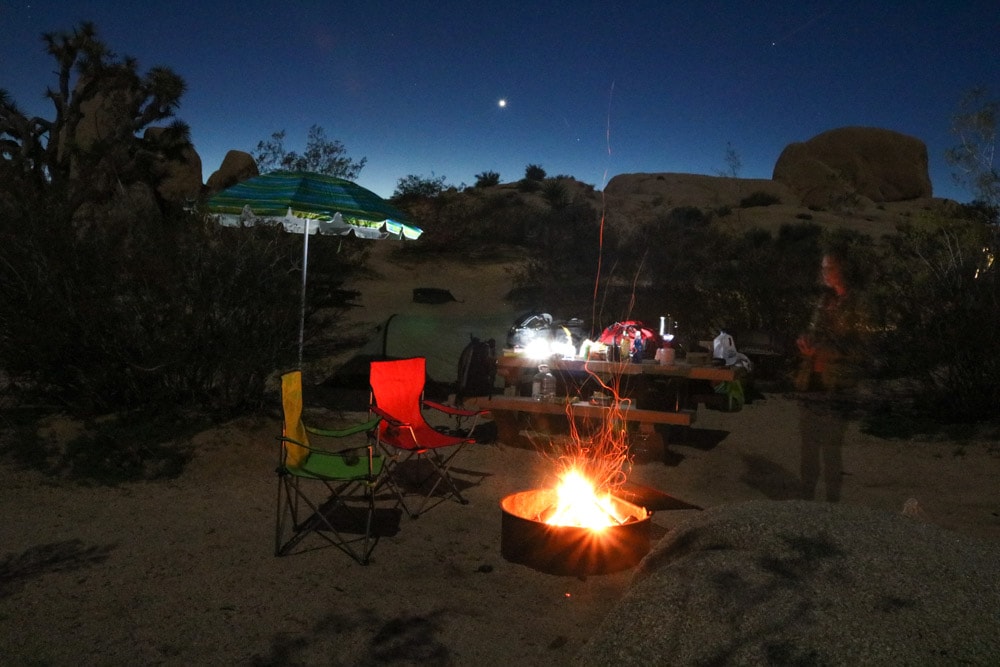
Death Valley National Park
The third and last destination on this Southern California desert parks road trip is kind of like an epic finale. Located within the Mojave Desert, Death Valley is one of the greatest American national parks. It’s one of my personal favorite parks, too, along with Joshua Tree, Petrified Forest, Shenandoah and Capitol Reef.
This is a place of absolute extremes. The largest national park outside of Alaska, Death Valley National Park encompasses the lowest point in North America—Badwater Basin—and offers views of the highest mountain in the contiguous United States—Mount Whitney.
As far as Southern California national parks go, this is as extreme as you can get. Death Valley is both the driest and hottest place on the continent. Total annual rainfall averages 2 inches (5 centimeters) and summer temperatures peak at 120°F (49°C) or more.
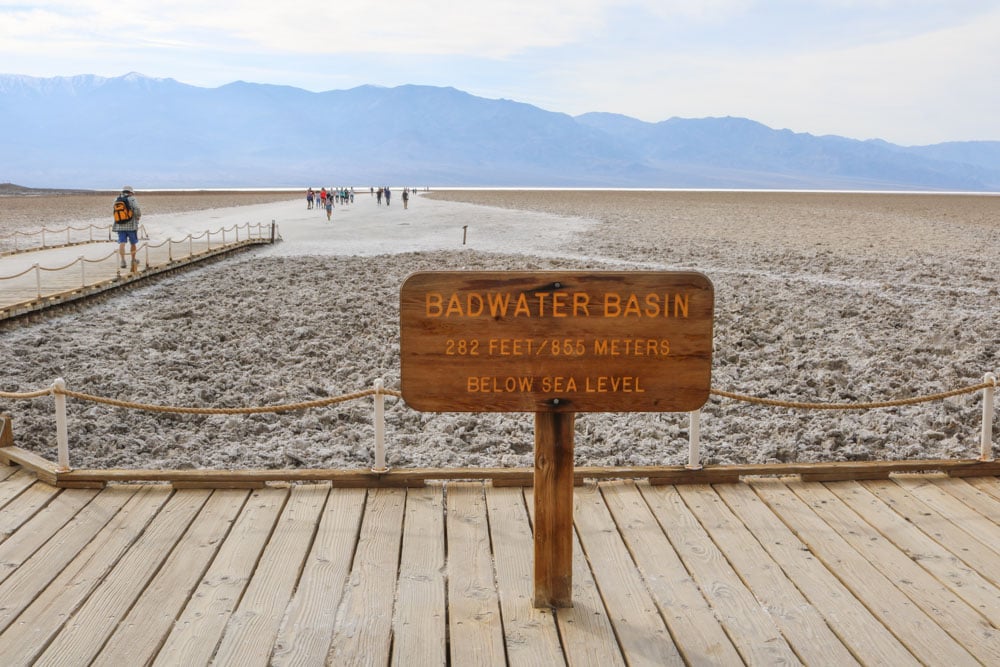
In Death Valley, you’ll find towering snowcapped peaks and billiard-table-flat salt pans. You can explore hill-sized sand dunes and colorful canyons. A couple of high overlooks offer sensational views of the valley. Death Valley National Park has lots more to offer than many people expect.
Because of the park’s extreme environment, I urge you to stay away from this place in summer, though. The heat will be unbearable that time of year. The most popular time to visit Death Valley is spring—that’s the absolute peak tourist season and also when Caroline and I spent four days in the park.
Let me assure you that even March can get ridiculously hot, though. Even in early spring, long hikes in Death Valley are best done in the morning. Afternoons are for lounging under a palm tree or swimming in a pool at Stovepipe Wells or Furnace Creek.
Also, despite the ominous-sounding name, Death Valley National Park is surprisingly alive. I lost count of the number of wild animals we saw.
Let me just say that this is the only place I’ve ever seen a coyote from up close and wild donkeys grazing happily on desert plains.
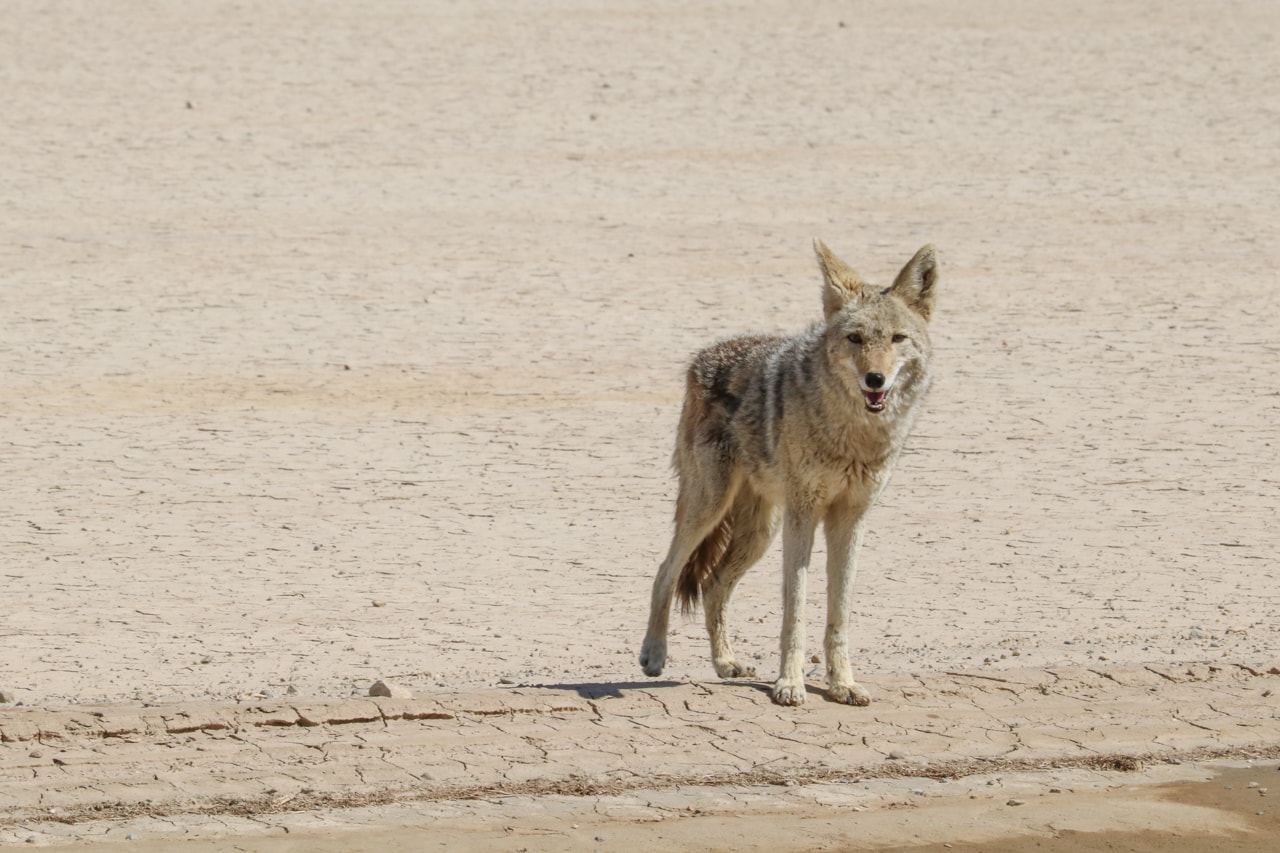
Death Valley Highlights
- Badwater Basin (lowest point in North America at 282 feet (86 meters) below sea level and one of the biggest Southern California parks attractions)
- Zabriskie Point (classic viewpoint of the Death Valley badlands)
- Dante’s View (lookout point offering panoramic views of the valley, phenomenal sunsets)
- Mesquite Flat Sand Dunes (most accessible sand dunes in the park, hiking)
- Harmony Borax Works (historic borax mine, exhibits)
- Devil’s Golf Course (expansive area of sharp salt rocks)
- Artist’s Drive (scenic drive through colorful canyons, valley views)
- Salt Creek (natural habitat of endemic pupfish)
Recommended Hikes
- Golden Canyon, Gower Gulch and Badlands Loop (8-mile (13-kilometer) circuit through ocher-colored badlands, passing by Zabriskie Point)
- Mesquite Flat Sand Dunes (no designated trail, you’re free to explore the towering dunes as you please)
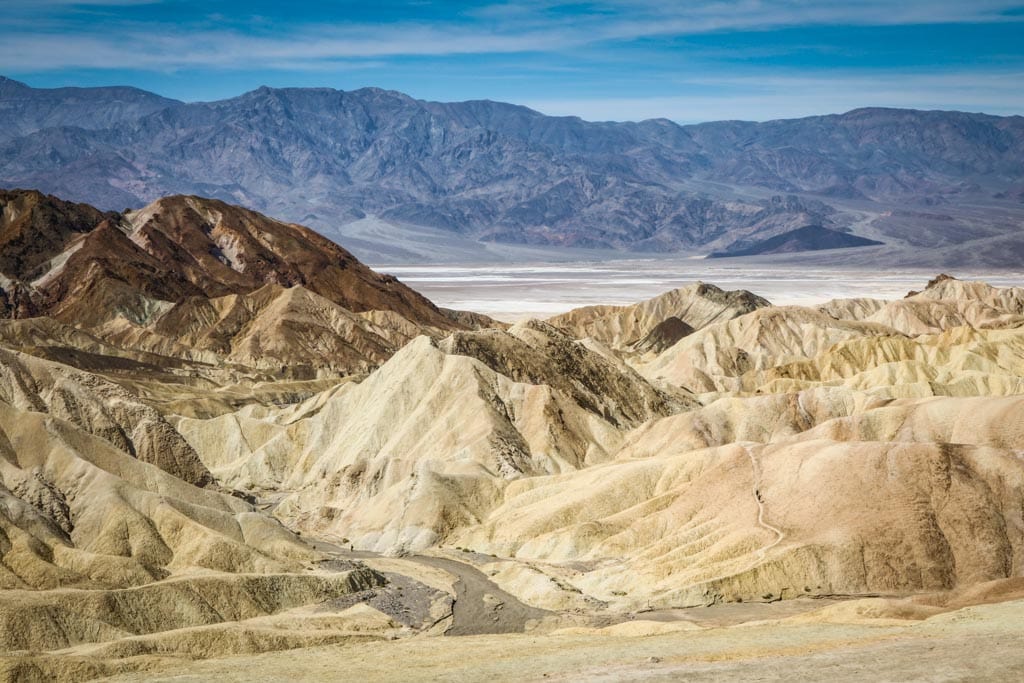
When to Visit?
Short answer: Early spring
Long answer: Death Valley National Park is at its prime in early spring. This is when nights still cool off, allowing for relatively comfortable morning hiking.
If you’re lucky, you’ll get to see wildflowers bloom on the hillsides and desert flats, and various migrating birds in the oases. Creeks still flow in spring, which gives you the chance to see the endemic pupfish.
Summer is when you really don’t want to be in Death Valley. Afternoon temperatures are often higher than your body temperature, which makes it extremely uncomfortable to be outside.
In summer, the only places in Death Valley you’ll want to be are air-conditioned restaurants or saloons, and your car. This eliminates more than half of the fun that the park has to offer. Visit Death Valley in March.
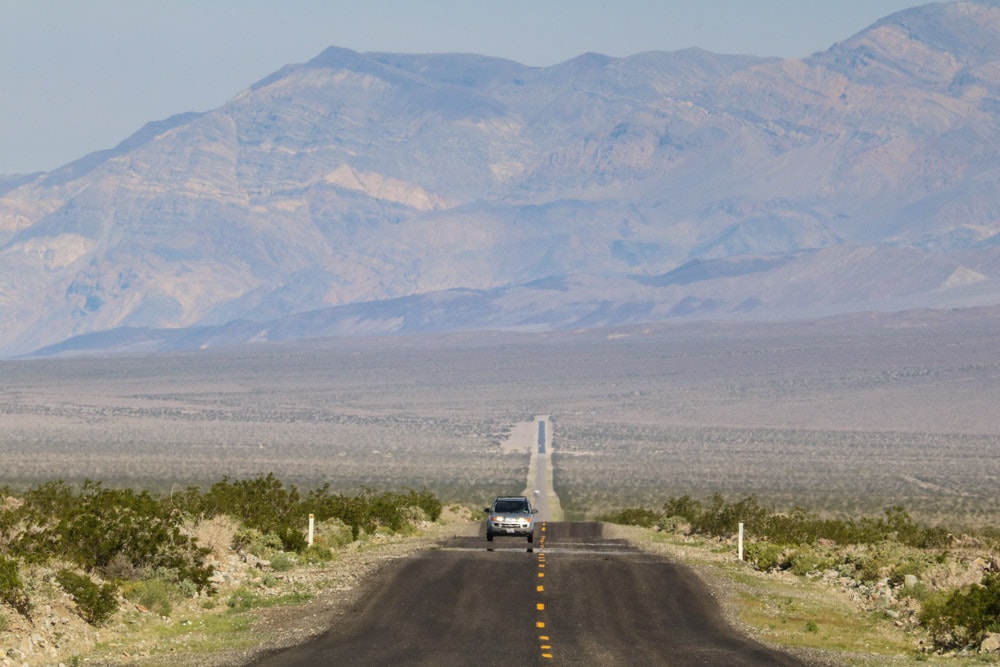
Where to Stay?
Short answer: Stovepipe Wells Campground
Long answer: Because early spring is the best time of year to visit Death Valley National Park, I recommend staying at the Stovepipe Wells Campground. This first-come first-served campground, managed by the National Park Service, is arguably the best of its kind in the entire park.
It lies just across the road from the privately owned Stovepipe Wells Resort, which has a swimming pool, saloon and showers. There’s also a well-stocked grocery store and a gas station.
The campground itself has nothing more than toilets, tables, fire grates and drinking water. The Stovepipe Wells RV Park, located right next to the campground, is a part of the Resort. It is worth noting that the RV Park does take reservations (in case you’re RV-ing).
The reason you should stay at Stovepipe Wells as opposed to Furnace Creek, which is home to the park’s main visitor center and many other facilities, is that the Furnace Creek Campground requires reservations in early spring.
If you like to play it by ear, as we did when we visited, Stovepipe Wells is where you want to go. There’ll be plenty of space for you to pitch your tent. Death Valley’s campgrounds hardly ever get filled, except for the one in Furnace Creek.
Note, though, that the Stovepipe Wells Campground is closed from May 15 to October 14. It’s simply too hot to be camping that time of year. Furnace Creek Campground is open all year long, however, and is first-come first-served from mid-spring to mid-fall.
Besides these two main campgrounds, there are several others in Death Valley National Park.
Check the National Park Service website for a full, up-to-date overview. Many campgrounds as well as other major highlights lie along California Highway 190, which runs through the park and is one of the most scenic roads in American national parks.
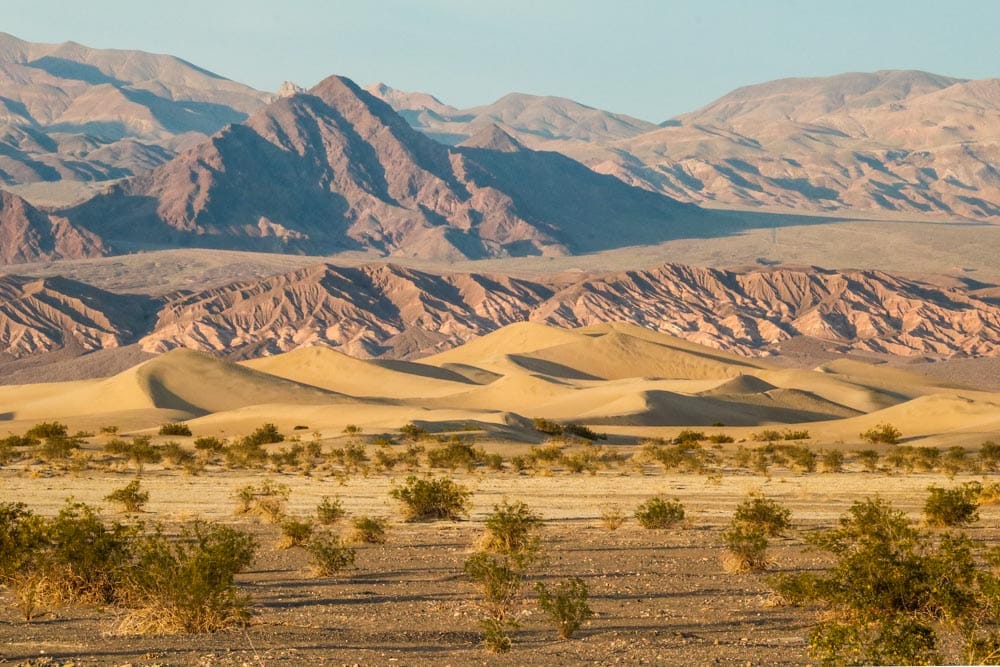
How Much Time Do You Need?
Short answer: Three days, three nights
Long answer: Some people “do” Death Valley National Park in just one day, but that’s almost unacceptable. Do this enormous park justice and spend at least three days there. There’s so much to do and see in Death Valley that you’ll need a few days to tackle things properly.
I really recommend camping because the night skies in Death Valley are sensational. This is an International Dark Sky Park for a reason.
If you spend 72 hours in Death Valley, you’ll have sufficient time to see all the highlights mentioned above. You’re there anyway, so why not take some more time to explore the park more in-depth?
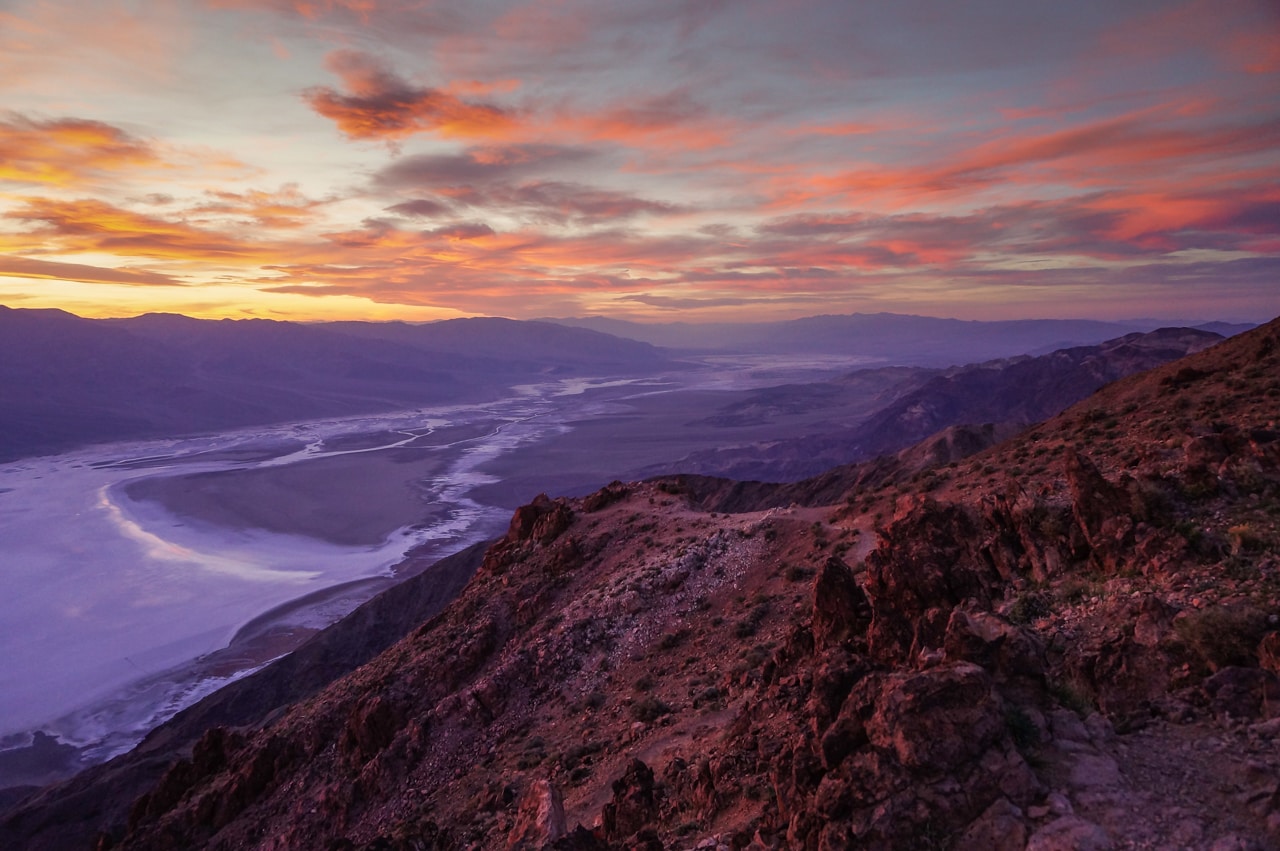
Have You Been to (Any of) These Southern California Desert Parks? Share Your National Parks Experience in the Comments Below!
Other National Park Road Trips
- Best National Parks Along Route 66
- Best USA National Park Road Trips
- The Ultimate Arizona National Parks Road Trip
- The Ultimate Cascades Volcanoes Road Trip
- Northern Rockies National Parks Road Trip
- Driving Virginia’s Blue Ridge Parkway in Fall
- Road Trip to the Mighty 5 National Parks in Utah
- Pacific Northwest National Parks Road Trip







